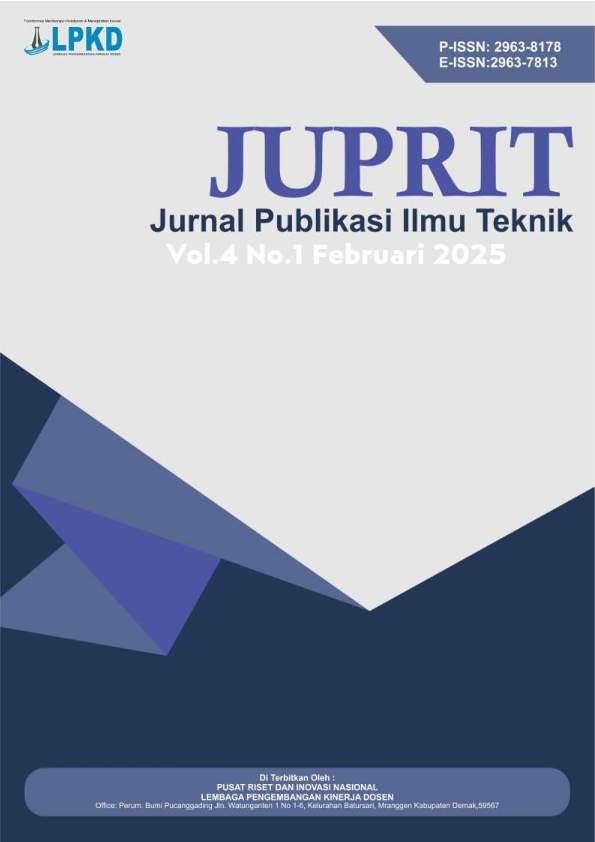Pemanfaatan Canva dalam Pembelajaran Interaktif: Kajian Kualitatif
DOI:
https://doi.org/10.55606/juprit.v4i1.4694Keywords:
Canva, interactive learning, creativity, motivation, elementary schoolAbstract
This research aims to explore the use of Canva as an interactive learning medium at the elementary school level. Canva, an easy-to-use graphic design platform, offers great potential to create engaging, creative, and visual learning experiences for students. This study uses a qualitative approach with a case study method involving grade IV students in an elementary school as research subjects. Data collection techniques include observations, interviews with teachers and students, and documentation of student work using Canva. The results of the study show that the use of Canva can increase student interactivity, creativity, and motivation to learn. Students actively participate in learning, mainly when creating posters, infographics, or presentations describing the concepts being taught. Material comprehension has also improved, especially on topics that require visual representation. While several obstacles are related to device access and student adaptation time, the benefits of using Canva in learning are significant. This study suggests that teachers should regularly integrate Canva into their learning to improve the student learning experience and provide training on how to use Canva to maximize its use. Further research is needed to examine the long-term impact and compare it with other interactive learning media
Downloads
References
Anaelka, A. H. (2018). Education 4.0 Made Simple: Ideas For Teaching. International Journal of Education and Literacy Studies, 6(3), 92. https://journals.aiac.org.au/index.php/IJELS/article/view/4616
Astirini Swarastuti, Budiyanto, B., & M Bambang Purwanto. (2024). Management of English Learning to Improve Digital-Based Language Literacy Skills. International Journal of Education, Vocational and Social Science, 3(01 SE-Articles), 202–215. https://doi.org/10.99075/ijevss.v3i01.672
Bambang, M., & Ariya Agustin. (2022). Workshop Online Pembelajaran Bahasa Inggris: Strategi Belajar Grammar dan Structure Bagi EFL. Jurnal Pengabdian Masyarakat Indonesia, 1(2 SE-Articles), 22–27. https://doi.org/10.55606/jpmi.v1i2.185
Bonar Siagian, & M Bambang Purwanto. (2023). Lextutor English Learning Pronunciation and Vocabulary: A Language Data Base Program. PUSTAKA: Jurnal Bahasa Dan Pendidikan, 4(1 SE-Articles), 116–130. https://doi.org/10.56910/pustaka.v4i1.1062
Budiyanto, Kabri, K., Harapan, E., & Purwanto, M. B. (2024). 21st Century English Learning: a Revolution in Skills, Critical Thinking, Creativity, and Visual Communication. Asian Journal of Applied Education (AJAE), 3(1 SE-Articles), 43–54. https://doi.org/10.55927/ajae.v3i1.7841
Dacholfany, M. I., Iqbal, M., Rahmi, E., & Purwanto, M. B. (2024). Principal’s Leadership Strategy in Efforts to Develop the Quality of Human Resources in Schools. JIIP - Jurnal Ilmiah Ilmu Pendidikan, 7(1 SE-), 487–493. https://doi.org/10.54371/jiip.v7i1.3356
Hanadya, D., Auliana, N. U., & Purwanto, M. B. (2022). Kepuasan Mahasiswa Terhadap Pelayanan Sarana Dan Prasarana Perpustakaan Di Politeknik Darussalam Palembang. Jurnal Ilmiah Mahasiswa Perbankan Syariah (JIMPA), 2(1), 171–182. https://doi.org/10.36908/jimpa.v2i1.61
M. Bambang Purwanto. (2024). Overcoming Barriers In English Learning For The Hospitality And Tourism Industry: Effective Strategies For Success. Journal of English Teaching and Linguistics, 1(02 SE-Articles), 68–77. https://jetli.yupind.com/index.php/jetli/article/view/10
Marsinah Marsinah, R.A Rodia Fitri Indriani, Hatidah Hatidah, & M Bambang Purwanto. (2024). Pelestarian Kearifan Lokal Kain Tradisional Gambo: Upaya Meningkatkan Kualitas Hidup Dan Kebudayaan Masyarakat . Jurnal Kabar Masyarakat, 2(2 SE-Articles), 277–285. https://doi.org/10.54066/jkb.v2i2.1985
Novia, F., Desti Nurdianti, & M Bambang Purwanto. (2024). English Learning and Innovation Skills in 21st: Implementation of Critical Thinking, Creativity, Communication, and Collaboration. Asian Journal of Applied Education (AJAE), 3(2 SE-Articles), 113–124. https://doi.org/10.55927/ajae.v3i2.8318
Nuswantoro, P., Marsinah, M., Rahmi, E., & Purwanto, M. B. (2023). School Principal Leadership Style In Improving Teacher Professionalism. International Journal of Technology and Education Research, 1(02), 19–27. https://doi.org/10.99075/ijeter/issue/view/16.v1i01.305
Purwanto, M. B., & Al Firdaus, M. M. (2023). Analysis of Students’ Learning Motivation: Psychometric Parameters Study of Learning English Courses in the Business Travel Department. Metathesis: Journal of English Language, Literature, and Teaching, 7(1), 86–96. https://doi.org/10.31002/metathesis.v7i1.414
Purwanto, M. B., & Despita, D. (2022). Review on Vocabulary Teaching Strategies: Study Case: Effect of Learners’ Lexical Recall. Journal of English Education, Literature and Linguistics, 5(2), 60–68. https://doi.org/10.31540/jeell.v5i2.1934
Purwanto, M. B., Despita, D., & Auliana, N. U. (2024). Task-Based Language Teaching in Hospitality Training. Asian Journal of Applied Education (AJAE), 3(4 SE-Articles), 387–400. https://doi.org/10.55927/ajae.v3i4.11777
Purwanto, M. B., & Rosyidin, I. (2024). The Profile of a Prospective Teacher Candidate’s Digital Literacy: A Case Study on Faculty of Teacher Training and Education of PGRI University of Palembang. LIMEEMAS: Jurnal Ilmiah Pendidikan, 2(1 SE-Articles), 35–45. https://ejournal.apmapi.or.id/index.php/Limeemas/article/view/25
Taufiqi, M. A., & Purwanto, M. B. (2024). Promoting Religious Moderation through English Language Teaching: Strategies and Challenges in Islamic Educational Settings. ETERNAL (English Teaching Journal), 15(2), 192–202. https://doi.org/10.26877/eternal.v15i2.443
Umar, U., Purwanto, M. B., & Al Firdaus, M. M. (2023). Research And Development: As The Primary Alternative to Educational Research Design Frameworks. JELL (Journal of English Language and Literature) STIBA-IEC Jakarta, 8(01), 73–82. https://doi.org/10.37110/jell.v8i01.172
Downloads
Published
How to Cite
Issue
Section
License
Copyright (c) 2024 Jurnal Penelitian Rumpun Ilmu Teknik

This work is licensed under a Creative Commons Attribution-ShareAlike 4.0 International License.








